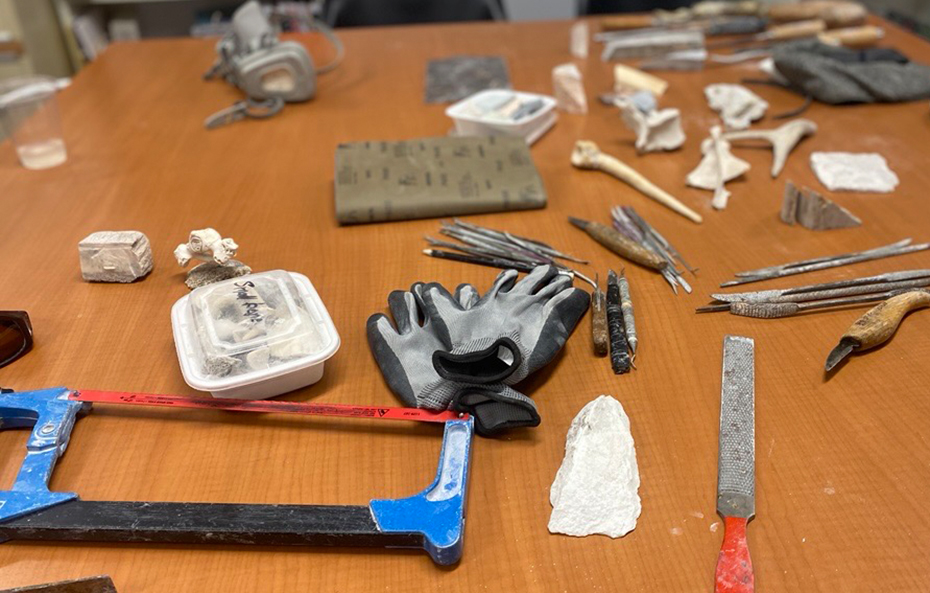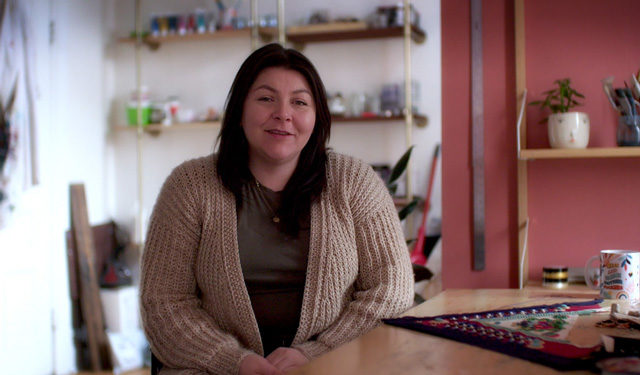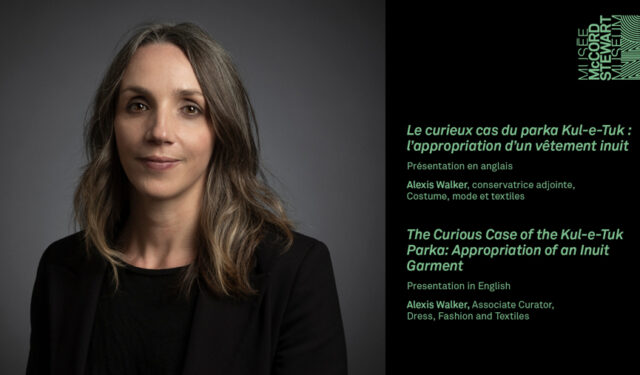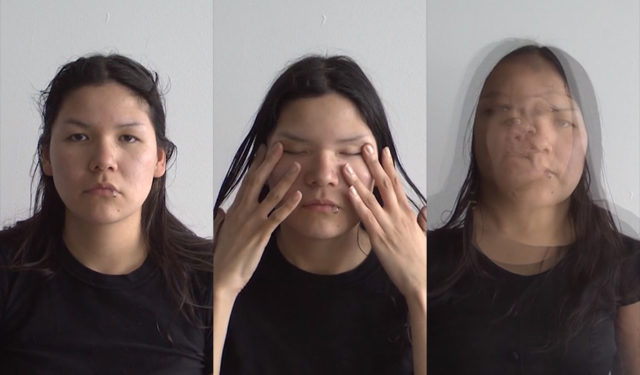Ilisarniq: Studying My Culture
Jessie Fortier-Ningiuruvik, graduate of Nunavik Sivunitsavut, talks about the significance of cultural safety within the college environment.
February 10, 2025
In conjunction with the exhibition Manasie Akpaliapik: Inuit Universe, the McCord Stewart Museum has established a special cultural safety project in collaboration with the teaching staff of the Springboard to a DCS program offered to Nunavimmiut at the Collège Montmorency. One component of the project, which focuses on the integration of Inuit cultural content into the school curriculum, has been to give those enrolled in the program the chance to meet the artist Manasie Akpaliapik. The Isumavik, a “place to reflect,” is a communal respite and study space made available by the Cegep to Nunavimmiut students. It was there that Manasie met with them.
Jessie Fortier-Ningiuruvik is a graduate of Nunavik Sivunitsavut, a springboard program similar to the one offered by the Collège Montmorency. Jessie, who followed the one-year Cegep program at John Abbott College, currently works at the Avataq Cultural Institute. The McCord Stewart Museum invited her to participate in the activities associated with the project. She explains how important such initiatives are.
______
The Nunavik Sivunitsavut program helped me to reconcile with my culture and my language. Studying alongside other students from Nunavik made me feel a little less alone in Montreal, given that I only go back to the North at most three times a year. The program allows young Inuit to better situate themselves, not only in relation to the city, but also their own history. Where do they come from? How can they use their history to develop and increase their knowledge in the modern world?
Nunavik Sivunitsavut covers a wide range of subjects, from the visual arts to sociopolitical issues, and sparks many discussions – some serious, others less so. The program also helps students navigate the world of Cegep with the support of Kativik Ilisarniliriniq, the Nunavik school board, which accompanies them throughout their studies. Nunavik Sivunitsavut is proof of our people’s resilience. We are proud of our identity. And we will continue to demonstrate our perseverance, that’s for sure.
Takuminartuq
The sculptor Manasie Akpaliapik offers further proof of resilience. An artist who’s had a fascinating life, he’s a man of great wisdom. Manasie always insists on the importance of continuing to strive for an equitable future, of never giving up.
He still travels regularly to tell his stories and give drum dance performances. He’s inspiring. I’m happy to have had the chance to see his works and to talk with him during his visit to Montreal. I was able to ask him a few questions and to listen to his views.
To be able to show your artworks, knowing they represent a lot of self-healing and are full of history – how does it make you feel to be able to tell part of your story?
I have been doing this work for forty-five years. I kind of look at it as a job. Growing up, I saw my grandfather doing carving every day, creating in stone. I admired him, and I decided I wanted to do it as well. I rely on Inuit legends, trying to show how they were doing things back then. I find my materials from up North, going on the land. I do art daily. I try to make sure everything is right, on the highest level possible, until it’s complete.
For each piece of art you finish, what is your train of thought?
I usually take a week to finish. Afterwards I’m glad it’s gone. I never thought they’d come back, although I’m happy to see them together. When I start, I don’t know what’s going to happen until it’s finished. I try to make it different and better each time. I surprise myself! [laughs]
Your art has travelled to many galleries and museums, spreading the knowledge from one community to another. What would you say to your younger self?
What I’m doing is showing the younger generation, teaching them. I try to pave the way with different materials. I’m also trying to teach the safety side of it: mask, gloves, being organized with tools. Younger people today, they have better tools, and also the Internet. Before, we didn’t have that, so I think they’ll pick it up fast and in a good way. If I was able to talk to me as I was then I would say: “Don’t be afraid of trying. Don’t belittle yourself. Just do it.”
Nakurmiik
What I’ve learned over the course of my journey so far is that you mustn’t be afraid of who you are, and especially you mustn’t be ashamed to be proud. There’s potential in every one of us. It’s perhaps not easy to see, but it’s there. As Manasie has shown us, you can’t give up. Don’t be afraid to stand out and to push your ideas to the limit. If one idea doesn’t work out, the next one will, I’m sure!






